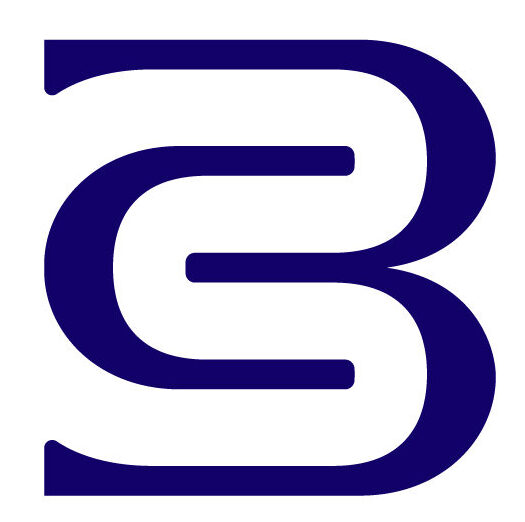
It is a smart idea to trademark your name and logo in this age of branding and internet marketing. For your business, trademarking provides numerous advantages and protections.
Understanding some trademark basics can help you realize why trademarking your name and logo is a good idea. To begin, know what a trademark is and what it does: it protects the symbol, slogan, logo, or image that you use in relation with your business from being used by someone else who uses the same (or substantially similar) symbol, slogan, logo, or image.
Consider the familiar Starbucks emblem, McDonalds’ Golden arches, and Red Bull’s fighting bulls. All of these are trademark slogans, logos, or images that are instantly recognizable and protected from other companies using the same or similar logos and slogans.
When symbols, slogans, logos, or images qualify for trademark
You may hold the rights to your symbol, slogan, logo, or image if you start using it on your packaging, product labels, or product and your company is linked with that phrase, color combination, form, or image under common law. This is known as a common law trademark. The common law, however, does not give sufficient protection for your symbol, slogan, logo, or image. The scope of common law trademarks is restricted. They are also difficult to safeguard and enforce.
Benefits of registering a trademark
There are a variety of advantages to registering a trademark. These are some of them:
- The right to use the symbol, slogan, logo, or image in association with the goods or services indicated in the trademark registration.
- A presumption of ownership.
- The capacity to obtain trademarks (and the trademark rights that come with them) in other countries
- The option to ask the US Customs and Border Protection Agency for help in seizing items imported into the US that falsely bear your trademark or bear a substantially similar trademark meant to seem like your brand.
- The capacity to sue in federal court rather than in state court for trademark infringement.
How much does it cost to get a trademark
The cost of trademarking a business name starts at $225 and goes up to $400 per trademark class. This is the fee for filing a trademark application with the USPTO. The USPTO’s Trademark Electronic Application System is the quickest and least expensive option to register your trademark (TEAS). Keep in mind that you are only allowed to register one trademark per application.
There are several types of trademark applications, each with its own set of fees:
- TEAS Plus: $225 per class.
- TEAS RF: $275 per class.
- TEAS Regular: $400 per class.
TEAS Plus is the cheapest application process, but you must meet additional criteria to use it. You must choose from a list of pre-approved trademark classes provided by the USPTO. You must also pay the per-class filing fee in advance and agree to communicate with the USPTO solely through email and the online TEAS system.
TEAS RF is similar, however you don’t have to pick your goods and services ahead of time. If your trademark does not fit well into one of the current categories, you can request a customized class of goods or services.
Finally, TEAS Regular, the most expensive application, is for applicants who want custom classes and the opportunity of receiving paper correspondence from the USPTO lawyers reviewing their application.
Remember that USPTO fees change from time to time, so it’s best to check before you begin trademark registration.
Additional costs of trademarking a business name
The prices listed above are for a simple trademark application and assume you won’t need legal help. There are a few more things that will raise the cost of applying for a trademark:
- Choosing more than one trademark class.
- Drawing your trademark
- Allegations of use
- Filing for an international trademark
Costs to maintain your trademark
It might cost anywhere from $550 to $1,250 to keep your trademark up to date. A trademark application is not a one-and-done procedure. Maintain your trademark by demonstrating that your company is still using it in connection with the classes you selected in your initial application.
The following are the trademark filings you’ll need to submit on a regular basis, along with the filing fees for each:
- Between the fifth and sixth year after registration: File a Section 8 affidavit, commonly known as a Declaration of Use and/or Excusable Nonuse. You’ll use this form to demonstrate that you’re still doing business under your trademark. The filing fee for online submission is $125 per class.
- Between the ninth and 10th year after registration:File a Declaration of Use and/or Excusable Nonuse, as well as a Renewal Application. Because a trademark expires after ten years, you’ll need to apply for renewal together with the Declaration of Use form. After that, you’ll have to resubmit these forms every ninth and tenth year. The filing fee for each class is $425.
- (Optional) Declaration of Incontestability:This form, also known as a Section 15 affidavit, strengthens your trademark rights and prevents common legal challenges to your trademark. The use of this form is subject to various limitations. For example, in order to file for incontestability, you must have used your trademark for at least five years. The filing fee for online submission is $200.
You’ll receive email reminders from the USPTO before these deadlines if you provided an email address and authorized email communication in your original trademark application.
Trademark application timing
Each year, the Patent Office examines thousands of trademark applications. Starting the process of trademarking your symbol, slogan, logo, or image as soon as humanly possible is a smart idea. Even before they start using the mark, slogan, logo, or image, businesses can submit a “intent to use” application.
Do not underestimate the value of trademarks
Trademarks give rapid shortcuts for the human brain. The value of your symbol, slogan, logo, or image improves as your brand expands and public trust builds as a result of your good business practices. A nice symbol, motto, logo, or picture can also add to the worth of your company. You can sell your firm to a larger corporation if you have a recognizable branded symbol, slogan, logo, or picture.
Do i need a lawyer to get a trademark?
“No, you do not ‘need’ a lawyer to get a trademark,” is the short answer. You should be aware, however, that the United States Patent and Trademark Office (USPTO), which is part of the Department of Commerce, “highly advises” applicants to hire a trademark attorney.
An skilled attorney in this field can assist applicants with the application procedure. This is crucial because obtaining a trademark entails a number of legal requirements. In the long run, a skilled trademark attorney can save you time and money.
Attorneys that are familiar with trademark law can do a thorough search of all trademark registrations to ensure that the symbol, slogan, logo, or image in question is available for trademark.
This is important because you can’t lawfully use your suggested symbol, phrase, logo, or picture if it already has a trademark or is significantly similar to a trademarked symbol, slogan, logo, or image. It would be a waste of time and money to spend time and money into products that are labeled with an unusable symbol, slogan, logo, or image.
Considering applying for a trademark? At Collateral Base, we offer trademark representation to businesses. If you are considering trademarking your symbol, slogan, logo, or image, we can help you!
RELATED: How to protect a marijuana trademark





